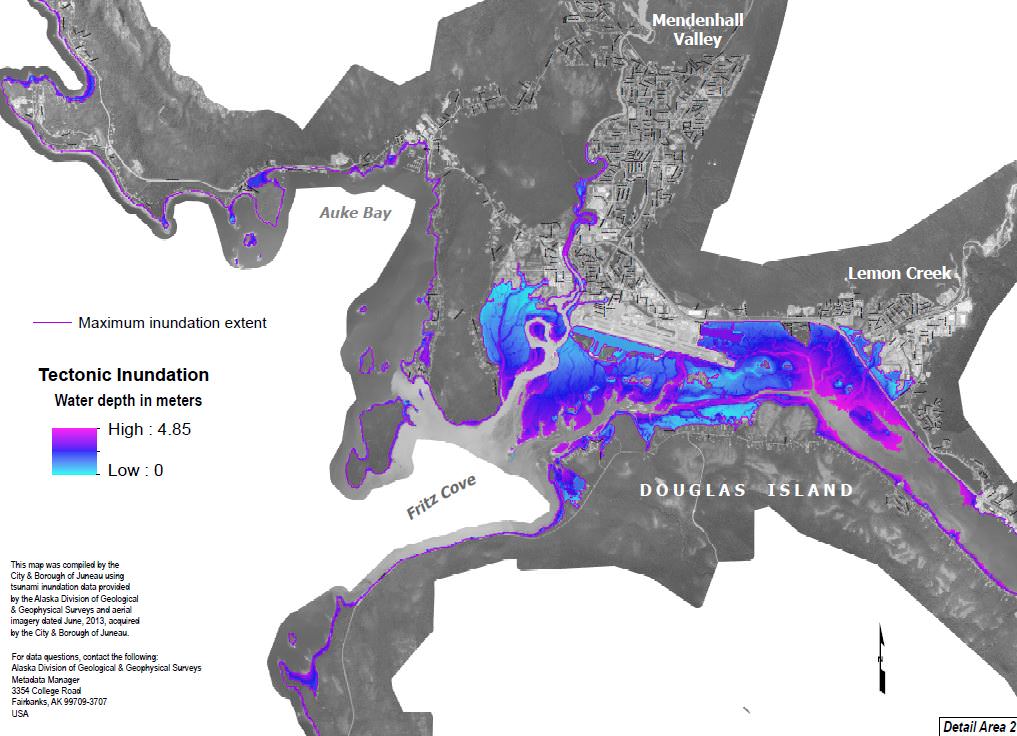
Report shows new tsunami threats to Juneau
A recently released report on potential tsunami hazards for Juneau examines hypothetical worst case scenarios. The paper, written by the Alaska Earthquake Center at the University of Alaska Fairbanks and the State Division of Geological & Geophysical Surveys, shows the maximum predicted wave height associated with two scenarios: 1) offshore tectonic tsunamis triggered by ocean-floor displacement; and 2) inshore local tsunamis caused by underwater, or submarine, landslides.
“We’ve always understood the threats from offshore tsunamis, but this report includes worst case threats from an inshore submarine tsunami, which is something we’ve never experienced or studied before. The report is scientifically accurate and feasible, though the probability of smaller wave events is higher. But these are worst case scenarios and they help us understand evacuation areas and response,” said City and Borough of Juneau Emergency Programs Manager Tom Mattice.
The report’s map combines maximum predicted wave heights of both scenarios. For clarity, CBJ provides two maps – one map showing maximum predicted wave height for offshore tectonic tsunamis and another map showing maximum predicted wave height for local inshore tsunamis.
Offshore tsunamis come from across the ocean, offering opportunities to activate the Tsunami Warning System and the Emergency Alert System, whereas an inshore, landslide-generated tsunami is a short duration event that doesn’t provide any time for warning, Mattice explained.
“If you are located in this Inshore Landslide Tsunami Zone and an earthquake occurs that is longer than 20 seconds, or if it is strong enough to knock you down, immediately seek higher ground. If nothing transpires in the next 30 minutes, you can assume it is a non-tsunami event,” Mattice said.
For more information, contact Emergency Programs Manager Tom Mattice at 586-0419 or [email protected].
